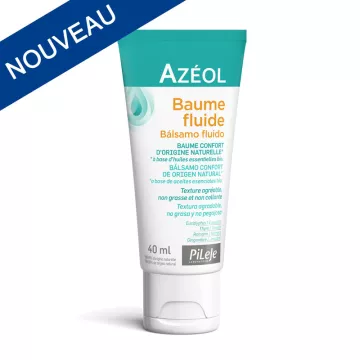
What is a balm and how do I use it?
A balm is a semi-solid substance designed to be applied to the skin to moisturize, protect or heal. Thanks to its rich, concentrated texture, it offers thicker coverage than lotions or creams, making it ideal for treating dry, irritated or damaged areas.
To use a balm, take a small amount with your fingers and apply it directly to the area concerned. The product will begin to melt on contact with body heat, making it easier to apply. The balm is recommended for use on clean skin and, depending on its function, can be applied once or several times a day.
What are the main benefits of balms for the skin?
Balms are enriched with moisturizing, nourishing and sometimes medicinal ingredients, offering multiple benefits for the skin:
How to choose the right balm for your skin type?
The choice of balm should be guided by your skin's specific needs:
Can I use a balm every day?
Yes, most balms can be used daily, especially those designed to moisturize and protect the skin. However, for balms designed for therapeutic purposes or containing powerful active ingredients, it is advisable to follow the application recommendations provided by the manufacturer or a health professional.
How can I tell a balm from a cream or lotion?
The main difference lies in the texture and concentration of ingredients. Balms are generally thicker and less watery than creams or lotions. They contain a higher proportion of butters, oils and waxes, making them more nourishing and offering longer-lasting protection against dehydration. Creams and lotions, on the other hand, have a higher water content and are lighter, making them more suitable for rapid daily moisturizing.
Is it possible to make your own balm at home?
Absolutely, making your own balm is not only possible but also quite simple. You'll need butters (such as shea butter), vegetable oils (such as coconut or sweet almond oil), beeswax or vegetable wax to thicken the balm.gétale to thicken the mixture, and if desired, a few drops of essential oils to add fragrance and beneficial properties. The key is to heat and mix the butters, oils and wax over a low heat, then leave the mixture to cool in a suitable container until it solidifies.
Are balms suitable for all skin types, including oily skin?
Yes, there are balms specifically formulated for all skin types, including oily skin. For oily skin, it's essential to choose non-comedogenic (non-clogging), sebum-regulating balms. Ingredients such as hazelnut oil, jojoba oil and black cumin oil are excellent, as they help regulate sebum production without weighing the skin down.
Can the balm be used on the face?
It all depends on the balm's formulation. Some are specially designed for use on the face, particularly those intended for lip care, wrinkle reduction or the treatment of dry areas. It's crucial to check the ingredients to make sure they're suitable for facial use, especially if you have sensitive or blemish-prone skin.
How do I store a balm to prolong its life?
To guarantee the longevity of your balm, store it in a cool, dry place away from direct sunlight. Heat and exposure to the sun can melt the balm and alter the stability of the ingredients. In addition, always use clean hands to pick up the product, to avoid contamination by bacteria. If your balm changes color, scent or texture, it's time to replace it.